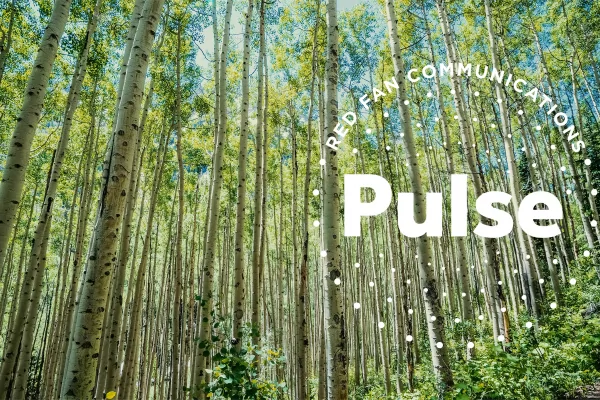On any given day, Google processes more than 8.5 billion searches—or about 99,000 searches per second. If one of those searches were to land on your website, would you be able to turn it into a qualified lead or a sale?
In today’s digital world, where visibility is a click away, the true challenge for marketers and PR professionals is to turn those clicks into meaningful conversions.
Depending on your business model, audience and other factors, the average ecommerce conversion rate is 3.65%, according to Adobe. That translates to nearly four out of every 100 site visitors.
As the media landscape evolves, it’s not just about gaining attention, but strategically leveraging media placements to generate qualified leads and drive conversions.
If you want to transform your media strategy from merely attracting eyeballs to actively cultivating and converting prospects, we have six tips to help. First, let’s look at the shift from online visibility to conversion.
Organizations have traditionally sought to increase conversions through high-traffic placements and far-reaching campaigns. However, with the saturation of digital content and the shift toward personalized experiences, the emphasis must now be on converting visibility into actionable leads. This shift requires a nuanced approach integrating media placements with strategic content and targeted messaging.
Innovative Approaches to Leveraging Media Landscapes
1. Precision Targeting with Data-Driven Insights
Data analytics can help gain deep insights into your audience’s behaviors, preferences and pain points to target your media placements precisely. For instance, using tools like Google Analytics, social media insights and CRM data can help identify high-intent audiences that are more likely to convert.
Segmented campaigns tailored to different audience personas align media placements with specific segments. This technique enables your content to resonate with the right people at the right time and increase conversions.
2. Strategic Content Placement
Integrate your content seamlessly into the media environment where it appears with native advertising. Native ads that match the format and tone of the platform tend to be less intrusive and more engaging, leading to higher conversion rates. For example, a sponsored article in a trade publication can provide valuable insights while subtly guiding readers toward your brand’s solutions.
You can also collaborate with media outlets and influencers to co-create content that aligns with their audience’s interests and your brand’s message. This collaboration could come in joint webinars, whitepapers or exclusive interviews that provide value while promoting your lead generation goals.
3. Interactive and Engaging Formats
Engage users with interactive formats like quizzes, polls and calculators that attract attention and encourage participation, allowing you to capture leads through opt-ins. For example, a financial services company might use a retirement planning calculator to engage users and collect their contact details for follow-up.
Rich media like video content, infographics and other formats can offer dynamic ways to present your value proposition. Videos, especially those with solid calls to action, can drive higher engagement and lead generation when strategically placed on platforms like YouTube or social media.
4. Conversion Optimization Techniques
Ensure that the content of your media placements aligns closely with the landing pages to which they lead. A consistent message and seamless user experience are critical from ad click to conversion. If an ad promotes a free e-book, the landing page should offer an easy download process and capture lead information effectively.
Continuously test different versions of your media content, calls to action and landing pages. A/B testing helps identify which elements drive the highest conversion rates, allowing for ongoing optimization of your campaigns.
5. Retargeting Strategies
Implement retargeting strategies to reach users who have previously interacted with your media but did not convert. Tailored ads that address their interests or remind them of the benefits can effectively reengage these prospects.
Use dynamic retargeting ads to show users personalized content based on their previous interactions with your brand. For instance, if a user visits a product page but doesn’t make a purchase, retargeting ads showcasing related products or special offers can drive conversions.
6. Case Studies, Reviews and Endorsements
Enhance credibility in your media placements by sharing success stories, testimonials and case studies that build trust and credibility. This makes it easier for potential leads to take the next step. For example, a SaaS company might highlight client success stories in their media campaigns to demonstrate their solution’s effectiveness. Industry influencers can share their positive experiences with your brand and encourage followers to engage with your content and convert.
Optimizing media landscapes for lead generation and conversions requires more than just increasing visibility. You can transform clicks into qualified leads and drive meaningful conversions by leveraging data-driven insights, strategic content placement, interactive formats and conversion optimization techniques.
Contact us to learn how to incorporate these innovative approaches with your media efforts to attract attention and deliver tangible business results through sales and qualified leads.




